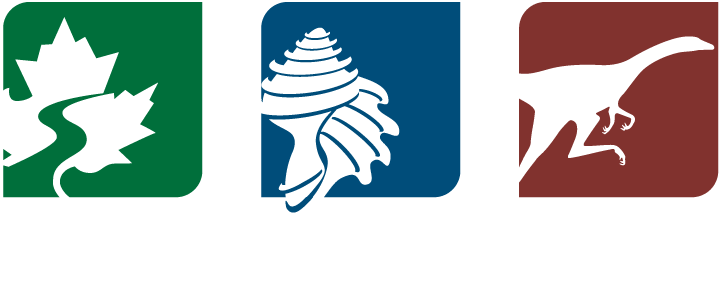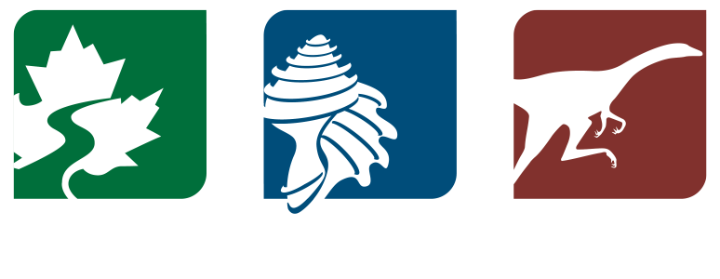Judith Skog
Judith skog
Judith Skog
Paleobotanist
Judith (“Judy”) Skog is a paleobotanist. She studies the evolutionary history of early vascular plants (ferns and clubmosses) using modern molecular tools.
Judy went to college at Tufts University in Massachusetts. She became interested in paleobotany as an undergraduate student when she realized that it combined her affinities for botany and geology. She later attended the University of Connecticut for her master’s degree, followed by Cornell for her Ph.D. When interviewing to transfer to Cornell, the graduate coordinator said to her, “You do realize that if you wish to be accepted at Cornell you will need to be better than any male applicant.” Judy replied, “I don’t think that will be a problem.”
Paleobotany was part of the plant biology program at Cornell; because paleobotany is a cross-disciplinary field, Judy also trained in geology. She had a supportive network of female scientists in other biology fields, but she was often the only woman on geology field trips. As she remembers:
“For the first field trip in stratigraphy, we went on and on until lunchtime with not a single bathroom break. I asked one of the male students (who is still a good friend of mine) how this more elderly professor could last that long with no break. He confided to me that the prof was going around the rocks and relieving himself. So on the next field trip, I followed the prof constantly - he went around a rock and there I was, just tapping the cliff but always in sight of him. We made stops every two hours that day! And for every trip following, there were plenty of stops. There is more than one way to make a point in favor of women, I discovered.”
For her Ph.D. project, Judy described a Devonian (419 to 359 million years ago) plant, Ibyka amphikoma, using fossils from New York. In 1973, she and her advisor, Harlan Banks, formally published a paper describing the new species in American Journal of Botany. The relationships of this plant are not entirely clear, although some think that it is a very early relative of the modern horsetails (Equisetum).
Judy (top left) with Cornell geology professor John Wells (right front) and Stephen Schenckler (Cornell Ph.D. 1973, upper right corner) collecting fossils at Gilboa, New York, in 1970. Image from Judy’s Ph.D. dissertation, courtesy of Ed Cobb, Cornell School of Integrative Plant Science (SIPS).
After receiving her Ph.D. in 1972, Judy took a faculty position at George Mason University (GMU) in Fairfax, Virginia, where she spent the remainder of her research career. After a buyout, she became Professor Emerita at GMU in 2005 (in other words, she accepted a financial package from GMU that enabled her to retire early from her position as a faculty member, and she now has emerita, or retired, faculty status). She worked for the National Science Foundation from 2005 to 2020 as a Program Officer in Biology and Geology, a Deputy Division Director in Biology, and then a Division Director in Biology. Her research focuses mainly on the structure, evolution, and relationships among seedless vascular plants, especially ferns and lycophytes(clubmosses and relatives). She is also interested in botanical nomenclature, or the process of formally naming plants in the scientific literature.
Judy is proud to have been able to speak out and overcome many of the challenges that she has faced over the course of her career in order to help others and promote equality. As the first woman on the editorial board for the International Code of Botanical Nomenclature (a set of rules for formally naming plants, now the International Code of Nomenclature for Algae, Fungi, and Plants) in 2001, she advocated for the removal of required, gender-identifying, and inequitably applied titles for scientists, such as Ms. or Mrs. for women versus Dr. or Professor for men. As President of the Botanical Society of America (2010–2011), she worked to promote student participation in the society at all levels, efforts that continue today. As a Program Officer at the National Science Foundation, she encouraged that more and better-funded awards be given to early career scientists.
Daring to Dig Interview
The following are excerpts from a written interview that Judy did for the Daring to Dig project in 2021.
Please share any positive experiences you’ve had with mentors or role models during your career.
"I’ve had a lot of positive experiences with role models over the years. Barbara McClintock and her visits with female graduate students at Cornell was very inspiring for us and her sharing of the struggles she had and persevering through them gave us all hope. She was marvelous, sympathetic, and regaled us with her experiences and what she had to do. Sadly, many of us were still meeting those challenges, but her success spurred us all on. If she could do her work by demanding a small plot of land way at the end of campus, then we were sure we could make it also.
For paleobotany there were women like Suzanne LeClercq and Diane Edwards and Joan Watson – all of whom encouraged women in paleo. And actually my two advisors – Henry Andrews and Harlan Banks took me or sent me off to try new experiences in the field, telling me that I could do it. Henry sending me to a Tropical Pteridophytes summer course in Costa Rica was what led me to my research group of organisms, and meeting Florence Wagner and Herb Wagner provided excellent role models of a couple who both had successful careers in science. And they really encouraged students in pteridology.” [Pteridology is the study of ferns and other seedless vascular plants.]
What advice would you give to a girl or young woman who wants to be a paleontologist?
“Do it. Believe in yourself and be sure others trust you. Maintain a sense of humor and do not be afraid to call out unjust actions and to stand up for yourself. There will be many questionable moments– but hopefully fewer than I saw, so know that those of us ahead of you will be there when needed.”
In the field
The following pictures show Judy collecting fossils in West Virginia (left) and Florida (right). (Note: These images are part of a gallery. Click on each image to see the full picture and caption.)
Selected works by Judy Skog
Skog, J.E. 1992. The Lower Cretaceous ferns in the genus Anemia (Schizaeaceae), Potomac Group of Virginia, and relationships within the genus. Review of Palaeobotany and Palynology 70: 279–295. Link
Skog, J.E. 1993. The relationship of the fossil fern Schizaeopsis Berry to modern genera in the Schizaeaceae. American Fern Journal 83: 20–29. Link
Skog, J.E., and H.P. Banks. 1973. Ibyka amphikoma, gen. et sp. n., a new protoarticulate precursor from the Late Middle Devonian of New York State. American Journal of Botany 60: 366–380. Link
Skog, J.E., and D.L. Dilcher. 1994. Lower vascular plants of the Dakota Formation in Kansas and Nebraska, USA. Review of Palaeobotany and Palynology 80: 1–18. Link
Skog, J.E., J.T. Mickel, R. Moran, M. Volovsek, and E.A. Zimmer. 2004. Molecular studies of representative species in the fern genus Elaphoglossum (Dryopteridaceae) based on cp DNA sequences rbcL, trnL-F and rps4-trnS. International Journal Plant Sciences 165: 1–13. Link
Further reading
Wikipedia (Spanish edition): Judith Ellen Skog
Acknowledgments
This page and associated content about Cornell paleobotany was added to the online exhibit with the assistance of funding to Caren Shin from the President’s Council of Cornell Women.





